Our Products Cannot Be Used As Medicines Directly For Personal Use.


Welcome! For price inquiries, please feel free to contact us through the form on the left side. We will get back to you as soon as possible.
Lipids
Category
Lipids are one of the three major substances in organisms with vital biophysical functions. First, lipids are the main energy storage material and are an energy source for both conversion and transport. Second, lipids aid in the absorption of fat-soluble vitamins. Third, lipids are important components of the bio membrane system. To support your research, Creative Enzymes offers a variety of lipid products of different classifications, including phospholipids, sphingolipids, and sterols. In addition, we offer natural and synthetic lipids as well as other unique lipids to meet your special requests.
Categories
Lipids have been classified into eight categories by the Lipid Metabolites and Pathways Strategy (Lipid MAPS) consortium, as shown in the table:
| Category | Structure | Types/Examples | Applications |
| Fatty acyls | A hydrocarbon chain with a carboxyl group, linked to various substituents. | Fatty acids, fatty amides, fatty esters, oxylipins |
|
| Glycerolipids | Consists of a glycerol backbone with long-chain acyl and alkyl groups, and polar alcohols. | Triacylglycerols (TAGs), glycerophospholipids, glyceroglycolipids |
|
| Glycerophospholipids | Made up of a glycerol backbone, a polar head group, and up to two fatty acyl chains. | Phosphatidylcholine, phosphatidylthanolamine, phosphatidylserine |
|
| Sphingolipids | Consists of a long-chain amino alcohol backbone called a "sphingoid base" with an amide-linked fatty acid chain, and a polar head group. | Sphingosine, phospholipids, glycolipids |
|
| Sterol Lipids | Ringed lipids with a steroid nucleus, a hydroxyl group at carbon 3, and a side chain at carbon 17. | Cholesterol, ergosterol |
|
| Prenol Lipids | Composed of a chain of repeating five-carbon isoprene units (linear/cyclic/branched), including various functional groups like hydroxyl or carboxyl groups. | Isoprenoids, polyprenols, polyterpenes |
|
| Saccharolipids | Composed of a fatty acid linked to a sugar backbone. | Acylated glucosamine, acyl-trehaloses |
|
| Polyketides | Made up of a chain of alternating ketone and methylene groups. | Antibiotics and other bioactive compounds |
|
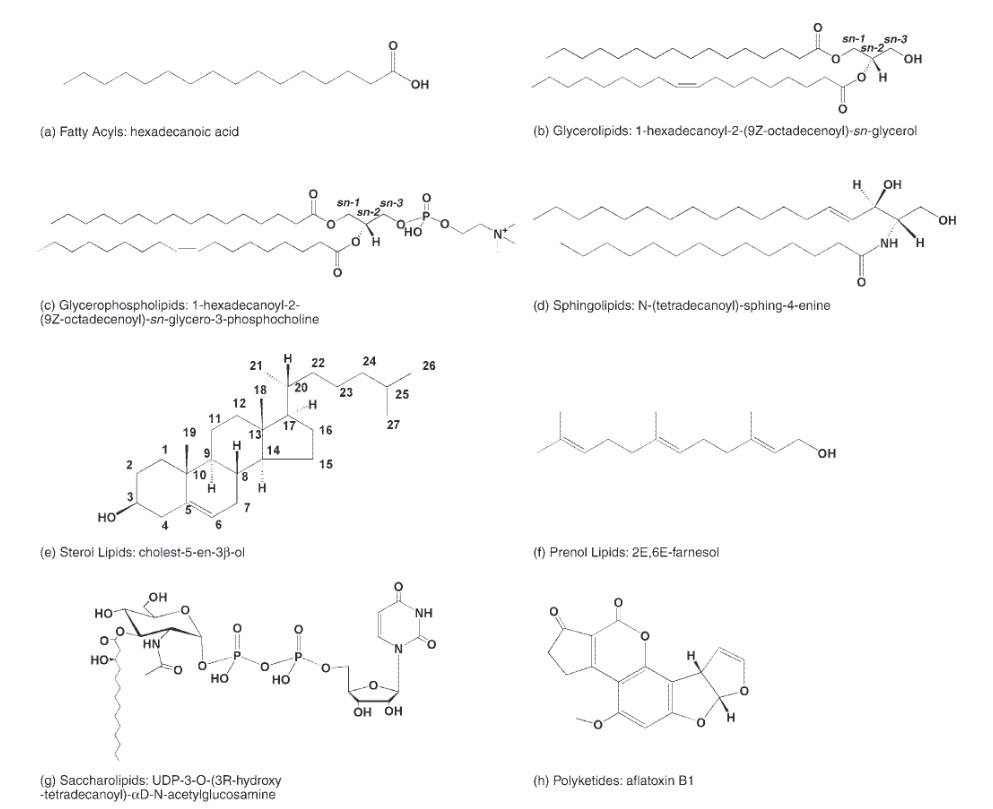 Fig. 1: Representative structures for each lipid category (Fahy et al., 2004).
Fig. 1: Representative structures for each lipid category (Fahy et al., 2004).
Our Diverse Range of Lipid Products
Phospholipids
Phospholipids are usually composed of fatty acids and glycerol. They may also contain phosphoric acid, nitrogen bases, and other substituents. They are also called polar lipids because they have a hydrophilic head and a nonpolar tail. Phospholipids are amphipathic in nature and can be divided into three groups: phosphoglycerides, phosphoinositides, and phosphingosides. Among them, phosphoglycerides are the major phospholipids containing glycerol groups linked to both phosphoric acid and fatty acids.
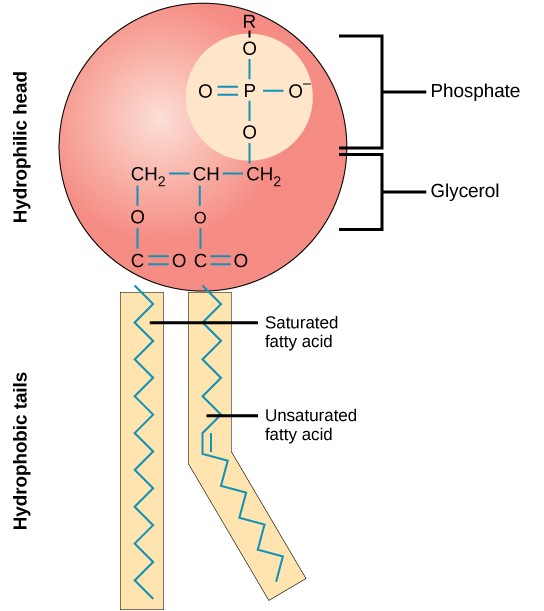 Fig. 2: Chemical Structure of a Phospholipid.
Fig. 2: Chemical Structure of a Phospholipid.
Sphingolipids
Sphingolipids are a group of lipids containing a series of aliphatic amino alcohols as a backbone, including sphingosine. Sphingolipids are widely distributed from yeast to mammals (TLC neutral glycosphingolipid mixture). Sphingolipids play an indispensable role in signal transmission and cell recognition. Once the sphingolipid metabolism is disrupted, it has a huge impact on neural tissue. The simplest sphingolipids are ceramides (brain ceramide), which have been found useful in topical medicines and cosmetic products. Glycolipids are a large group of sphingolipids that contain sugar molecules in their structures.
 Fig. 3: Chemical Structure of a Sphingolipid.
Fig. 3: Chemical Structure of a Sphingolipid.
Steroids and Terpenes
Steroids contain the backbone of cyclopentanoperhydrophenanthrene with four hydrocarbon rings in their structures. They are widely found in tissues of animals and plants and have vital importance in living activities. Steroids include sterol and its derivatives. Zymosterol, zoosterol and phytosterol are the three main forms of sterol. Phytosterol is involved in the metabolism of plants. Cholesterol, one of the zoosterols, plays an important role in maintaining the physical state of the bio membrane. It is also involved in atherosclerosis. Bile acid and vitamin D are the most commonly seen sterol derivatives, both of which are important for growth and development.
Terpenes are linear or cyclic hydrocarbons chemically related to steroids: they are often the precursor of steroids in biosynthesis. Although terpenes are present in small amounts in the cell, it has key biological functions in cell signaling, metabolism and biosynthesis. In addition, terpenes are useful active ingredients in agricultural pesticides.
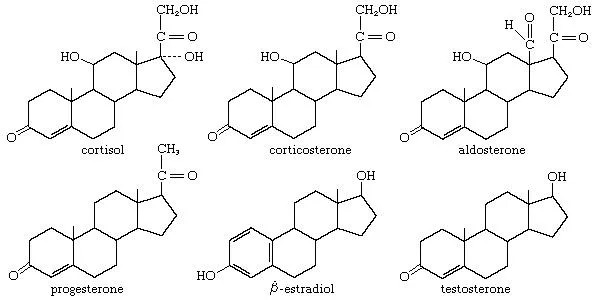 Fig. 4: Derived Lipids- Steroids and Terpenes.
Fig. 4: Derived Lipids- Steroids and Terpenes.
Natural, Modified, and Synthetic Lipids
Advances in extraction technologies have opened up new opportunities for the study of natural lipids and their diverse applications. Natural lipids, derived from plants, animals and microorganisms, are increasingly recognized for their potential in food processing and the formulation of health products. These lipids provide valuable nutritional benefits and can enhance the quality of functional foods, dietary supplements and cosmetic formulations. However, natural lipids have inherent limitations in structural diversity as they are primarily produced by organisms to serve specific biological functions, often tailored to their metabolic processes. As a result, their applications may be limited.
To overcome these limitations, natural lipids are often chemically modified to enhance their properties, resulting in modified or semi-synthetic lipids. These modified lipids can exhibit improved functionalities, such as increased stability, bioactivity or solubility, making them suitable for use in specialized research applications. However, their use in the pharmaceutical and medical sectors remains limited due to issues such as low thermostability and the potential for contamination from the original animal or plant sources.
In contrast, synthetic lipids are chemically synthesized from glycerol, providing a high degree of purity and allowing the creation of a wider range of lipid structures. This synthetic approach provides the flexibility to tailor lipids for specific applications while meeting the stringent standards required by the pharmaceutical industry. With their enhanced stability, precise molecular control and consistent quality, synthetic lipids meet the demanding requirements of drug delivery systems, gene therapy and other advanced medical applications, offering a higher level of reliability than their natural or modified counterparts. One example is solid lipid nanoparticles (SLNs), which can be made from synthetic lipids and used to deliver drugs and other payloads.
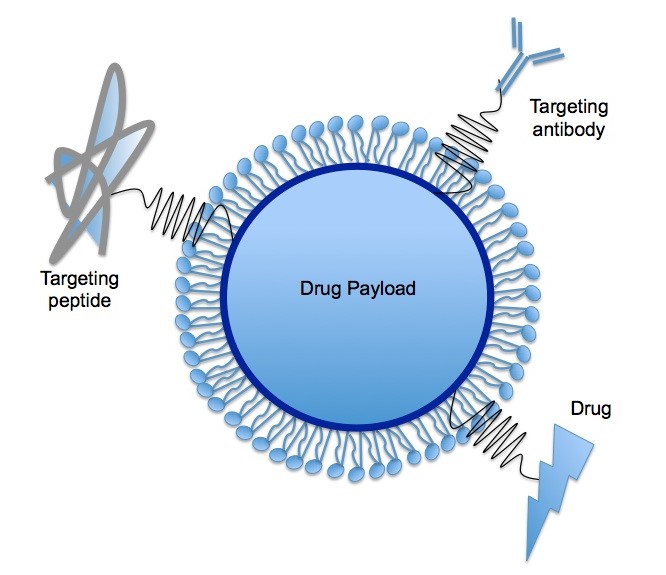 Fig. 5: Diagram of a solid lipid nanoparticle (SLN). There is only one phospholipid layer because the interior of the particle is solid. Molecules such as antibodies, targeting peptides, and the drug molecule itself are bound to the surface of the SLN.
Fig. 5: Diagram of a solid lipid nanoparticle (SLN). There is only one phospholipid layer because the interior of the particle is solid. Molecules such as antibodies, targeting peptides, and the drug molecule itself are bound to the surface of the SLN.
Fluorescent Lipids & Bioactive Lipids
Fluorescent and bioactive lipids are essential tools in the study of cellular mechanisms, particularly in areas such as signal transduction and cell membrane dynamics. Unlike typical lipids, these specialized lipids carry additional functional groups that allow them to perform functions beyond their natural biological roles. Fluorescent lipids, for example, are modified with fluorescent tags that allow researchers to visualize and track lipid movement, interactions, and localization within cell membranes in real time. This ability to report fluorescence is invaluable for studying lipid behavior in living cells and tissues, advancing our understanding of complex cellular processes.
Bioactive lipids possess modified signaling capabilities, which means they can actively participate in or influence biological pathways. By interacting with cell receptors, these lipids help to study pathways related to inflammation, immunity, and metabolic regulation, providing insights into disease mechanisms and potential therapeutic targets. Because of these improvements, fluorescent and bioactive lipids are widely used in biological research, from pathological studies to drug development, supporting applications in cancer research, neurobiology, cardiovascular studies, and metabolic disorders. These versatile tools are critical to researchers seeking to dissect cellular functions at the molecular level and explore innovative treatments for a wide range of diseases.
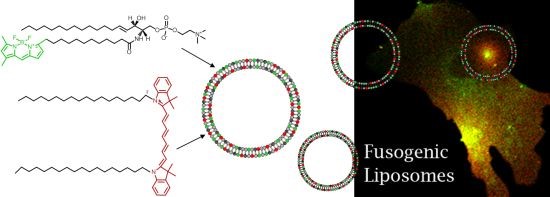 Fig. 6: Fluorescent lipids: functional parts of fusogenic liposomes and tools for cell membrane labeling and visualization (Kleusch et al., 2012).
Fig. 6: Fluorescent lipids: functional parts of fusogenic liposomes and tools for cell membrane labeling and visualization (Kleusch et al., 2012).
Cationic & Neutral Lipids
Certain specialized lipids, such as polymerizable lipids, cationic lipids, and neutral lipids, are rare but essential for cutting-edge research and breakthrough applications.
Cationic lipids carry a positive charge, which allows them to interact effectively with negatively charged molecules, such as DNA or RNA. This property makes them crucial for gene delivery and gene therapy, as they can form complexes with genetic material, enabling efficient transport into cells. Cationic lipids are also widely used in drug delivery systems, vaccine development, and cellular research.
 Fig. 7: Structures of cationic lipids which are frequently used lipids for gene transfer. DOTAP: 1,2-dioleoyl-3-trimethylammonium propane (chloride salt); DOTMA: 1,2-di-O-octadecenyl-3-trimethylammonium propane (chloride salt); DDAB: dimethyldidodecylammonium (bromide salt); DOPE: 1,2-dioleoyl-sn-glycero-3-phosphoethanolamine (Sharma et al., 2021).
Fig. 7: Structures of cationic lipids which are frequently used lipids for gene transfer. DOTAP: 1,2-dioleoyl-3-trimethylammonium propane (chloride salt); DOTMA: 1,2-di-O-octadecenyl-3-trimethylammonium propane (chloride salt); DDAB: dimethyldidodecylammonium (bromide salt); DOPE: 1,2-dioleoyl-sn-glycero-3-phosphoethanolamine (Sharma et al., 2021).
Neutral lipids, on the other hand, have no net charge, contributing to their stability and compatibility within biological membranes. They are often used as building blocks in liposomal formulations, stabilizing structures within cell membranes, and are essential in applications ranging from pharmaceuticals to cosmetics.
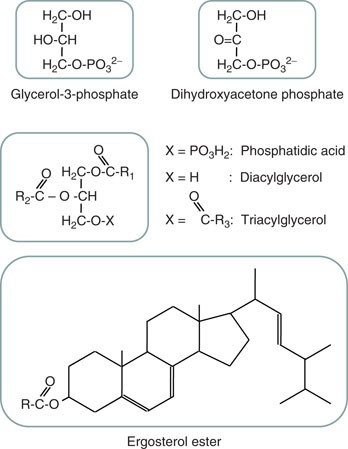 Fig. 8: Structure of neutral lipids in yeast (Athenstaedt, 2010).
Fig. 8: Structure of neutral lipids in yeast (Athenstaedt, 2010).
At Creative Enzymes, our lipid offerings are available in a range of specifications, purities, and quantities to meet diverse research and development requirements, from high-purity analytical standards to specialized formulations for experimental applications. Contact us with any inquires and questions!
References:
- Athenstaedt K. Neutral lipids in yeast: synthesis, storage and degradation. In: Timmis KN, ed. Handbook of Hydrocarbon and Lipid Microbiology. Springer; 2010:471-480.
- Kleusch C, Hersch N, Hoffmann B, Merkel R, Csiszár A. Fluorescent lipids: functional parts of fusogenic liposomes and tools for cell membrane labeling and visualization. Molecules. 2012;17(1):1055-1073.
- Sharma D, Arora S, Singh J, Layek B. A review of the tortuous path of nonviral gene delivery and recent progress. International Journal of Biological Macromolecules. 2021;183:2055-2073.
| Catalog | Product Name | EC No. | CAS No. | Source | Price |
|---|---|---|---|---|---|
| FLBZ-036 | 9-PAHSA-d9 | 1809222-43-2 | Inquiry | ||
| FLBZ-034 | C16-04:0 PC | 85405-03-4 | Inquiry | ||
| FLBZ-030 | C18-04:0 PC | 83526-67-4 | Inquiry | ||
| FLBZ-020 | Azelaoyl-PAF | 354583-69-0 | Inquiry | ||
| FLBZ-019 | VPC 51299 | Inquiry | |||
| FLBZ-018 | 14:0 NPS PC | 273931-53-6 | Inquiry | ||
| FLBZ-017 | DGTS | 1607456-57-4 | Inquiry | ||
| FLBZ-016 | DGTS-d9 | Inquiry | |||
| FLBZ-015 | C16-18:1 PC | 95403-34-2 | Inquiry | ||
| FLBZ-014 | 18:1 DGPP | 474943-14-1 | Inquiry | ||
| FLBZ-013 | 1-O-Acyl-Ceramide | 1246303-19-4 | Inquiry | ||
| FLBZ-012 | 16:0 Lysyl PG | 1246303-06-9 | Inquiry | ||
| FLBZ-011 | 18:1 Lysyl PG | 1246303-07-0 | Inquiry | ||
| FLBZ-010 | 16:0 CDP DG | 384835-55-6 | Inquiry | ||
| FLBZ-009 | 18:1 CDP DG | 799812-77-4 | Inquiry | ||
| FLBZ-008 | 16:0-20:4 PE-N-20:4 | Inquiry | |||
| FLBZ-007 | 18:1 PE-N-20:4 | 1246304-42-6 | Inquiry | ||
| FLBZ-006 | α-mycolic acid (C80) | 23040-84-8 | Inquiry | ||
| FLBZ-005 | α-Mycolic acid, Methoxy cis | 23599-54-4 | Inquiry | ||
| FLBZ-004 | α-Mycolic acid, Keto cis | Inquiry | |||
| FLBZ-003 | Kdo2-Lipid A (KLA) | 1246298-62-3 | Inquiry | ||
| NSMZ-146 | 12:0 Biotinyl MG | 799812-64-9 | Inquiry | ||
| NSMZ-145 | 18:0 Dibromo MG | 1438282-43-9 | Inquiry | ||
| NSMZ-144 | 12:0 Biotinyl LPA | 799812-69-4 | Inquiry | ||
| NSMZ-143 | 4ME 16:0 Diether DG | 99341-19-2 | Inquiry | ||
| NSMZ-139 | 16:0-16:0 (16-F) PC | 215362-14-4 | Inquiry | ||
| NSMZ-137 | 18:1-12:0 Biotin DG | 799812-65-0 | Inquiry | ||
| NSMZ-136 | 16:0-23:2 Diyne PE | 328946-17-4 | Inquiry | ||
| NSMZ-133 | 4ME 16:0 PE | 201036-16-0 | Inquiry | ||
| NSMZ-131 | 16:0-23:2 Diyne PC | 84271-00-1 | Inquiry |